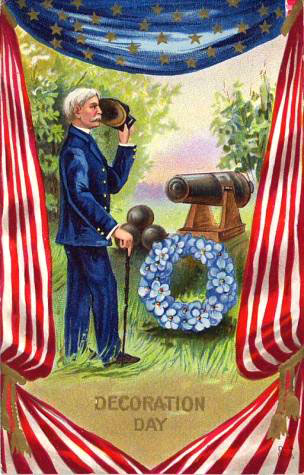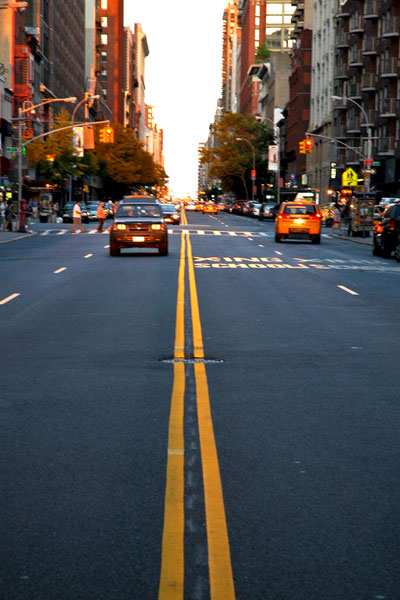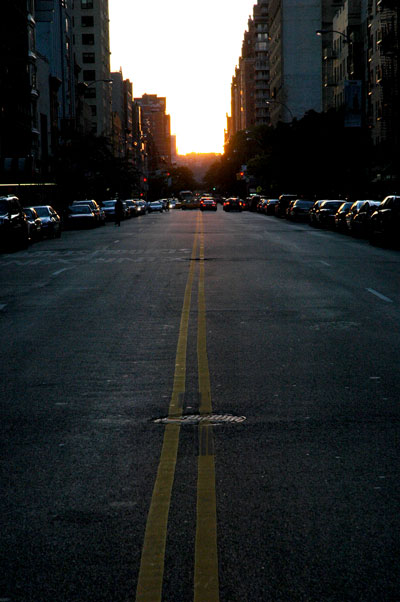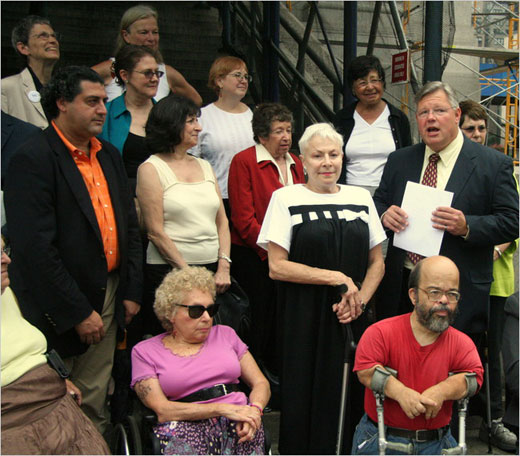
but where's the gray, and, for that matter, the colors of our countless other fallen foes?
And it's not for generals.
It seems Memorial Day is not supposed to be just about hot dogs, the Indianapolis 500, or summer whites. In fact the holiday formerly known as Decoration Day (the official name by Federal law until 1967) wasn't even originally owned by war veterans. While today it commemorates Americans who died in any war throughout our extraordinarily-aggressive, warlike history, it was first enacted in response to the horrors of a civil war. The date itself, now established as the last Monday of May, was originally determined by the month of the final surrenders which marked the conclusion of the American Civil War.
But its disjointed history is actually far from the tidy story which an official declaration might seem to suggest.
What became Decoration Day, and eventually Memorial Day, had many separate origins. Towns in both the North and the South were already memorializing their recent war dead, and "decorating" their newly-dug graves, in spontaneous observances in the years before the 1868 official proclamation by General John Logan, the last national commander of the Grand Army of the Republic, in his "General Orders No.11".
The holiday the general created was first observed on May 30, 1868. Flowers were placed on the graves of both Union and Confederate soldiers at Arlington National Cemetery. That cemetery, incidentally, was located on land the U.S. government had appropriated from Robert E. Lee at the beginning of the war, a development likely to have made an significant impression on the defeated South as much as on the Lee family itself.
Within two decades or so all of the northern states were observing the new holiday, but the South refused to acknowledge it. This should not have surprised anyone, either then or since. Even though the date May 30 had been picked precisely because it was not associated with any battle or anniversary, the observance itself was tainted by its association with the victorious and hated Union.
The various states of the old Confederacy continued to honor their own dead, on separate days, until after World War I, when the holiday was broadened to include not just those who died fighting in the Civil War but Americans who died in any war. Even then, most of the states of the old South still maintained separate days for their own dead, and do so to this day, although with varying degrees of enthusiasm.
I checked into this history yesterday when I was trying to decide whether I could honorably display the antique 48-star flag I've had for almost 40 years (antique in fact when I acquired it). I had kept it in a Chinese camphor-wood trunk for decades because our flag had come to be associated almost entirely with American jingoism; it had been hijacked by the crazies on the Right. Although I still had my doubts about the direction of this country even after Obama's 2008 victory, I pulled the old banner out and hung it in the apartment last year, on the day of his inauguration, and again a few months later on July 4th.
Bush's wars have now become Obama's wars, and my very tentative interest in flag-waving, even flag-hanging, has (please excuse the choice of word) sort of flagged, although I still find things to love about this increasingly dysfunctional country.
When do we get a holiday celebrating the peacemakers? Of course that's entirely a rhetorical question, coming from a citizen of a country which has almost never not been at war somewhere.
I went to Wikipedia in my search for a quick answer to my question about the original significance of the day we celebrate today mostly as just another excuse for a long weekend. There I learned that one time the holiday many originally associated with uncomplicated patriotic sacrifice did not mean the same thing for everyone, even in the 1860's. In the Wikipedia entry for "Memorial Day: History", I found this very moving and evocative window onto an America which was cursed to know war far better, and was far more weary of and horrified by it than our own:
At the end of the Civil War, communities set aside a day to mark the end of the war or as a memorial to those who had died. Some of the places creating an early memorial day include Sharpsburg, Maryland, located near Antietam Battlefield; Charleston, South Carolina; Boalsburg, Pennsylvania; Carbondale, Illinois; Columbus, Mississippi; many communities in Vermont; and some two dozen other cities and towns. These observances coalesced around Decoration Day, honoring the Confederate dead, and the several Confederate Memorial Days.
According to Professor David Blight of the Yale University History Department, the first memorial day was observed by formerly enslaved black people at the Washington Race Course (today the location of Hampton Park) in Charleston, South Carolina. The race course had been used as a temporary Confederate prison camp for captured Union soldiers in 1865, as well as a mass grave for Union soldiers who died there. Immediately after the cessation of hostilities, formerly enslaved people exhumed the bodies from the mass grave and reinterred them properly with individual graves. They built a fence around the graveyard with an entry arch and declared it a Union graveyard. The work was completed in only ten days. On May 1, 1865, the Charleston newspaper reported that a crowd of up to ten thousand, mainly black residents, including 2800 children, proceeded to the location for included sermons, singing, and a picnic on the grounds, thereby creating the first Decoration Day
So, the real meaning? I don't think we have agreement even now, and for myself I haven't yet decided whether to pull that faded old cloth from the trunk tonight.
[image of pre-WWI Decoration Day postcard from vintagepostacards]



